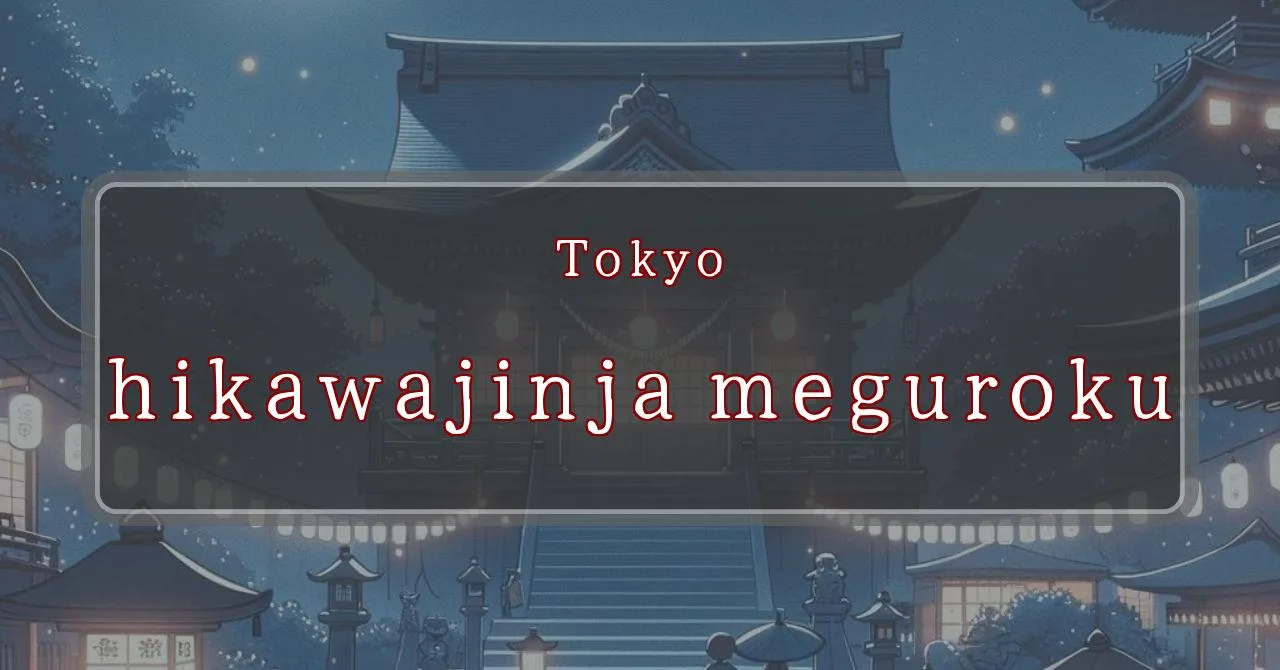Enchanting melodies and vibrant hues paint the streets of Meguro
Basic Information
Meguro Hikawa Shrine is a Shinto shrine located in Meguro, Tokyo, Japan. It is dedicated to the>
Main Events and Attractions of the Festival
The Meguro Hikawa Shrine Festival is a lively and colorful event that attracts many visitors each year. The main events and attractions of the festival include:
Mikoshi Procession
One of the highlights of the festival is the mikoshi procession. A mikoshi is a portable shrine that is carried through the streets by a team of people. The mikoshi of Meguro Hikawa Shrine is particularly large and impressive, and it is carried by a team of over 100 people. The procession takes place on the second day of the festival, and it is a sight to behold.
Kagura Performance
Kagura is a traditional Japanese dance that is performed at Shinto shrines. During the Meguro Hikawa Shrine Festival, kagura is performed by a group of young women who are dressed in colorful costumes. The kagura performance is a beautiful and graceful way to celebrate the festival.
Food and Games
The festival also features a variety of food and games. There are stalls selling everything from traditional Japanese dishes to international cuisine. There are also games for children and adults to enjoy. The festival is a great place to come and experience Japanese culture and traditions.
Fireworks Display
The festival concludes with a spectacular fireworks display. The fireworks are launched from a barge in the Meguro River, and they light up the night sky with their brilliant colors. The fireworks display is a fitting end to a wonderful festival.
Blessings and Deities
Meguro Hikawa Shrine is dedicated to three deities: Susanoo-no-Mikoto, Okuninushi-no-Mikoto, and Inari-no-Kami. Susanoo-no-Mikoto is the god of storms, seas, and agriculture. Okuninushi-no-Mikoto is the god of nation-building, marriage, and medicine. Inari-no-Kami is the god of rice, sake, and fertility.
- Susanoo-no-Mikoto: God of storms, seas, and agriculture
- Okuninushi-no-Mikoto: God of nation-building, marriage, and medicine
- Inari-no-Kami: God of rice, sake, and fertility
Origin and History
The origins of Meguro Hikawa Shrine are unclear, but it is believed to have been founded in the early Heian period (794-1185). The shrine was originally located in the village of Meguro, but it was moved to its current location in 1657. The shrine was destroyed by fire in 1868, but it was rebuilt in 1874.
- Founded: Early Heian period (794-1185)
- Original location: Village of Meguro
- Moved to current location: 1657
- Destroyed by fire: 1868
- Rebuilt: 1874
Tips and Notes for Visitors
Here are some tips and notes for visitors to Meguro Hikawa Shrine:
- The shrine is open daily from 9:00 AM to 5:00 PM.
- Admission is free.
- The shrine is a popular destination for weddings and other ceremonies.
- There is a small museum on the shrine grounds that displays artifacts related to the shrine’s history.
- The shrine is located a 5-minute walk from Todai-mae Station on the Tokyu Toyoko Line.
Parking Information
There is no parking lot at Meguro Hikawa Shrine. However, there are several public parking lots nearby.
- Meguro Central Park Parking Lot: 5-minute walk from the shrine
- Meguro Gajoen Parking Lot: 10-minute walk from the shrine
- Meguro Ward Office Parking Lot: 15-minute walk from the shrine
Popular Stalls and Food Carts in Recent Years
| Type of Stall | Description |
|---|---|
| Takoyaki | A staple at Japanese festivals. Characterized by a crispy outside and a creamy inside. |
| Jaga Butter | A simple yet popular snack of hot potatoes lavishly topped with melted butter. |
| Baby Castella | Small castella cakes, sweet and fluffy treats enjoyed by children and adults alike. |
| Grilled Ayu with Salt | Fresh ayu fish grilled whole with salt, a savory taste of Japanese summer. |
| Shaapin | A unique gourmet item influenced by foreign cuisine, with a chewy skin wrapping the filling. |
| Okonomiyaki | A Japanese grilled dish where you often choose your own ingredients for a personalized flavor. |
| Cotton Candy | A fluffy, sweet snack that’s extremely popular with children. |
| Chocolate Banana | A banana coated in chocolate, a fun and visually appealing dessert. |
| Kushiyaki | Various types of ingredients skewered and grilled, an easy-to-enjoy snack. |
| Yakisoba | Fried noodles mixed with a special sauce, a fast food favorite in Japan. |



